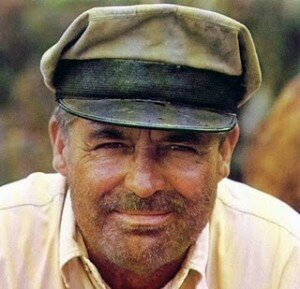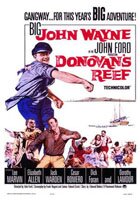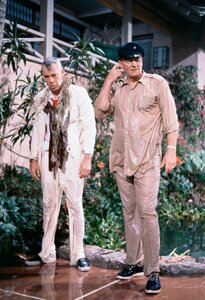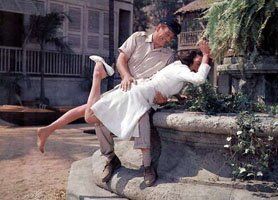A friend of mine went to visit some friends in Edmonton a few months ago. When she returned, I asked her what she had done. “Nothing,” she said.
“Did you go anywhere?”
“Nope.”
“Did you at least go to that restaurant I told you about?”
“No; there wasn’t time.”
She had been there for over a week. Yet all she had done was spend time with her friends.
That’s what some comfort movies are.
Many years ago when the marathon-like M*A*S*H was finally ending its time on television, someone made the observation that few people had watched it because they were eager to see the next episode. They weren’t wondering what would happen next. They were watching simply because they wanted to spend time with the characters they had come to know so well.
That is what some comfort movies do. Many of the John Wayne movies are like this. They may have drama or comedy but many people watch them simply to spend time with their idea of John Wayne and the characters associated with him.
This particularly comes across in his later movies, like Hatari! or Donovan’s Reef, or even an earlier movie like The Quiet Man. Their merits as films aside, people watch to see the Duke and the actors/characters associated with him, like Maureen O’Hara. There is a sense of knowing them, of a personal relationship, though we know that couldn’t possibly be true – we’ve never even met them! Yet we feel that way.
 So it strikes me that a characteristic of comfort movies is familiarity. We revisit certain movies in the same way we revisit certain friends and family. Familiarity. We enjoy spending time with them. This is why they are comfort movies.
So it strikes me that a characteristic of comfort movies is familiarity. We revisit certain movies in the same way we revisit certain friends and family. Familiarity. We enjoy spending time with them. This is why they are comfort movies.
Although it’s not the movie I’d like to start off with (it’s a bit misleading as far as what I consider a comfort movie to be), my favourite movie as far as this category goes is Father Goose.
Gasp! Am I nuts? Possibly. But for me this movie is as comfortable as old slippers. And that may be a good analogy because this movie is probably just as fashionable. Besides, it stars the always familiar Cary Grant, whom many simply like to watch. In anything.
- Review: Father Goose 1964

 This is a difficult film to defend, much less recommend, for many reasons, most of which have to do with director John Ford. Still, if I may refer to Glenn Erickson who,
This is a difficult film to defend, much less recommend, for many reasons, most of which have to do with director John Ford. Still, if I may refer to Glenn Erickson who,  The movie comes across as a collection of set pieces that are only loosely tied together. It’s almost episodic. These set pieces, however, are like a highlighting of key aspects of Ford’s work – again, almost like an executive summary. Many of these conclude with brawls – many of them seem to be excuses for brawl scenes – fights that involve almost everyone and where no one gets hurt.
The movie comes across as a collection of set pieces that are only loosely tied together. It’s almost episodic. These set pieces, however, are like a highlighting of key aspects of Ford’s work – again, almost like an executive summary. Many of these conclude with brawls – many of them seem to be excuses for brawl scenes – fights that involve almost everyone and where no one gets hurt. And if you didn’t grow up with these guys, if you’re unfamiliar with the sensibility and are unwilling to turn a blind eye to some of the stereotyping and so on (rather like sitting down with a politically incorrect grandfather who, smiling, unthinkingly throws out inappropriate remarks) … No, you won’t like this movie.
And if you didn’t grow up with these guys, if you’re unfamiliar with the sensibility and are unwilling to turn a blind eye to some of the stereotyping and so on (rather like sitting down with a politically incorrect grandfather who, smiling, unthinkingly throws out inappropriate remarks) … No, you won’t like this movie.
